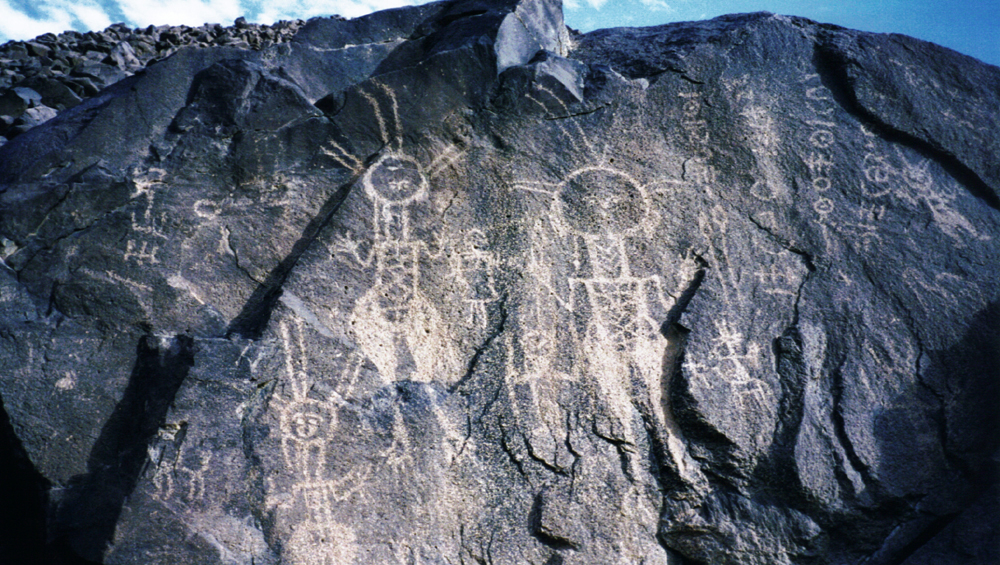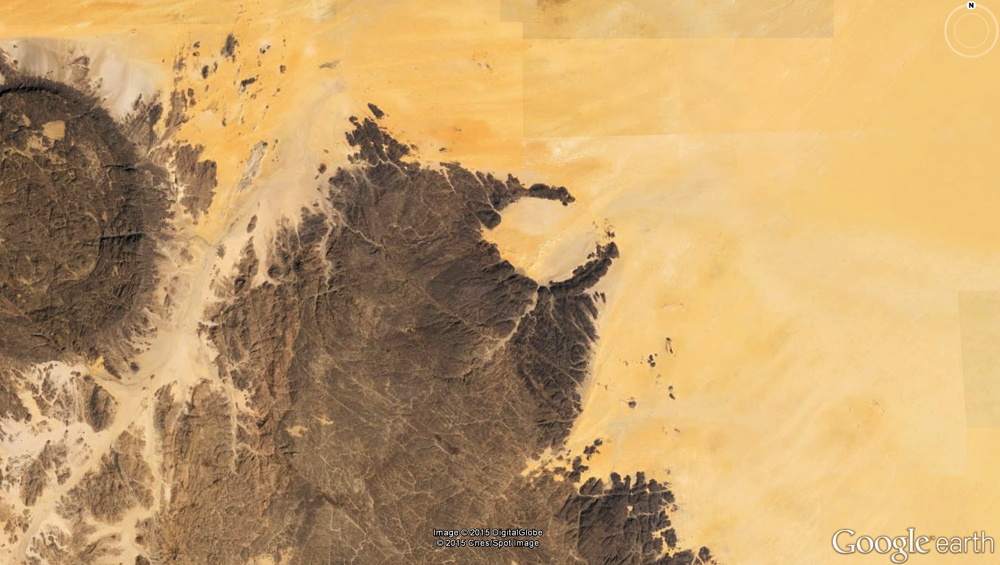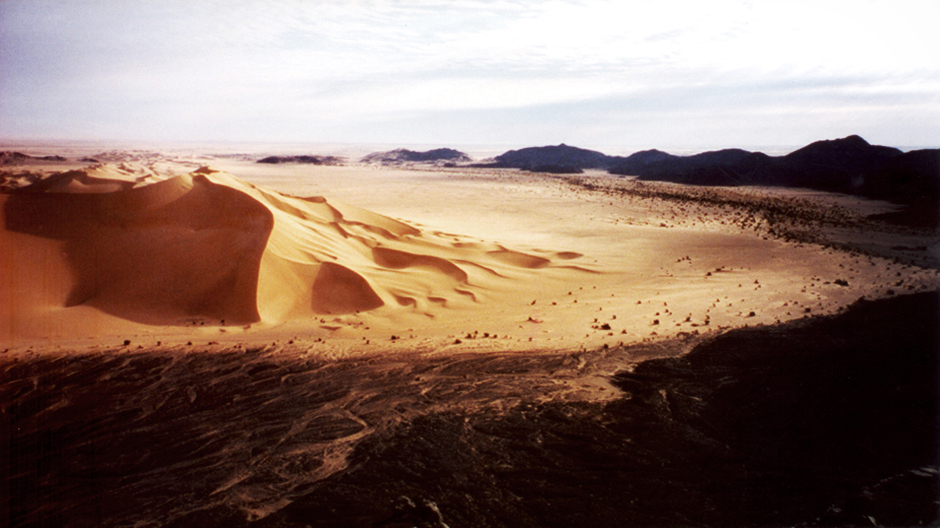


In the heart of the Sahara lies the Tenere Desert. 'Tenere' is literally translated as 'where there is nothing' and its desert landscape stretches for thousands of miles. But it is not a lifeless desert. It has seen human activity for thousands of years, one legacy of which is the carved petroglyphs, symbolizing life and culture, trade and territory. Today, the Tuareg are the descendants and custodians of this archaic culture.
This is northern Niger, where the Air Mountains meet the Tenere Desert, an ecological transition zone that has ancient demarcations in the form of rock art.

On an enormous boulder perched on a steep volcanic scree slope, these engraved figures with double triangle bodies are thought to represent Tuaregs and their culture.
The rock art engravings are believed to be between 2,000 and 5,000 years old, based on their archaeological context and artefacts found in the region. The engravings are surrounded by the Tuareg script 'Tifinagh'. The motifs expressed in the rock art are reflected in the silver Tuareg jewellery from this region of the Sahara.

The rock art site is on the edge of Arakou, named by the Tuareg, an extinct volcano on the north eastern edge of the Air Mountains, looking out onto the Tenere Desert. Over millennia, a small gap of the caldera has been eroded and the sands of the Sahara have blown into Arakou, collecting relentlessly and now forming one of the largest sand dunes in the world.

It was to this region of the Sahara that the Bradshaw Foundation, in association with the Trust for African Rock Art and the National Geographic Society, mounted several expeditions to document the rock art, and in particular, take a mould of the Dabous giraffe engravings, the world's largest animal petroglyphs.
View our section on the Sahara:
http://www.bradshawfoundation.com/africa/sahara.php
View the Dabous Project:
http://www.bradshawfoundation.com/giraffe/index.php
by Bradshaw Foundation
Monday 03 February 2025
by Bradshaw Foundation
Friday 09 August 2024
by Bradshaw Foundation
Wednesday 24 July 2024
by Bradshaw Foundation
Thursday 04 July 2024
by Bradshaw Foundation
Monday 01 July 2024
by Bradshaw Foundation
Wednesday 20 March 2024
by Bradshaw Foundation
Tuesday 13 February 2024
by Bradshaw Foundation
Tuesday 13 February 2024
by Bradshaw Foundation
Thursday 01 February 2024
by Bradshaw Foundation
Tuesday 28 November 2023
by Bradshaw Foundation
Thursday 23 November 2023
by Bradshaw Foundation
Monday 20 November 2023
by Bradshaw Foundation
Tuesday 31 October 2023
by Bradshaw Foundation
Thursday 26 October 2023
by Bradshaw Foundation
Wednesday 20 September 2023
by Bradshaw Foundation
Monday 17 July 2023
by Bradshaw Foundation
Monday 03 February 2025
by Bradshaw Foundation
Friday 09 August 2024
by Bradshaw Foundation
Wednesday 24 July 2024
by Bradshaw Foundation
Thursday 04 July 2024
by Bradshaw Foundation
Monday 01 July 2024
by Bradshaw Foundation
Wednesday 20 March 2024
by Bradshaw Foundation
Tuesday 13 February 2024
by Bradshaw Foundation
Tuesday 13 February 2024
by Bradshaw Foundation
Thursday 01 February 2024
by Bradshaw Foundation
Tuesday 28 November 2023
by Bradshaw Foundation
Thursday 23 November 2023
by Bradshaw Foundation
Monday 20 November 2023
by Bradshaw Foundation
Tuesday 31 October 2023
by Bradshaw Foundation
Thursday 26 October 2023
by Bradshaw Foundation
Wednesday 20 September 2023
by Bradshaw Foundation
Monday 17 July 2023
Friend of the Foundation











